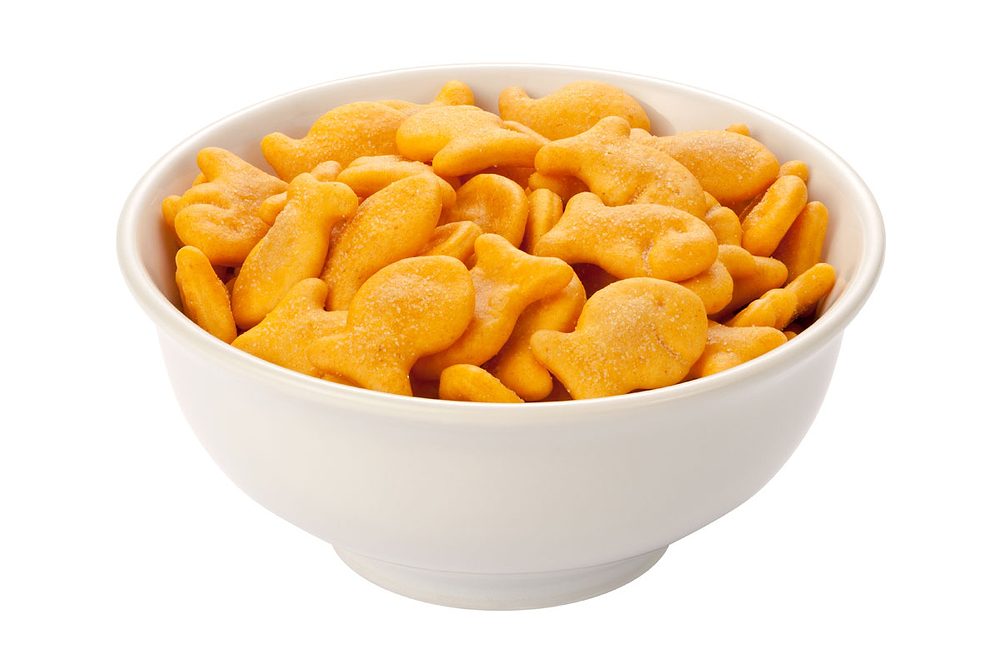CAMDEN, NJ. — Goldfish cracker brand sales rose 5% in the first quarter ended Oct. 29, and Lance cracker brand sales achieved double-digit sales growth at 15%. Yet overall sales for the Campbell Soup Co. declined 2% as soup sales were down 5%.
Net earnings attributable to Campbell Soup Co. were $234 million, equal to 79¢ per share on the common stock, which was down 21% from $297 million, or 99¢ per share, in the previous year’s first quarter. Net sales declined to $2.52 billion from $2.58 billion. Volume/mix dropped 5% while net price realization was up 3%. On an organic basis, net sales dropped 1%.
“As expected, organic net sales decreased by 1% to $2.5 billion, following a 15% increase in the prior year resulting in growth of approximately 7% on a two-year compound annual growth rate basis,” said Mark A. Clouse president and chief executive officer, in a Dec. 6 earnings call.
The stock price for the Camden-based company closed at $43.24 per share on the New York Stock Exchange Dec. 6, which was up 7% from a Dec. 5 close of $40.37 per share.
Net sales in Campbell’s Snacks segment were $1.11 billion, down 1% from $1.12 billion. Excluding the divestiture of the Emerald nuts business, organic net sales increased 1%. Increases in cookies and crackers, primarily Lance sandwich crackers and Goldfish crackers, were offset partially by sales declines in third-party partner brands. Net price realization of 5% partially was offset by volume/mix declines of 4%.
Goldfish Crisps chips are scheduled to be available at retailers nationwide in January, which the company hopes will further its appeal to teenagers.
“This is now going on two years of (Goldfish) being the No. 1 requested snack among teens, and that’s everything, right?” Mr. Clouse said. “That’s the brands you think of as being kind of these mega teen snacks, and Goldfish has been No. 1, and so when you think about a product like Crisps, where you really are intermingling kind of potato chip behavior with cracker behavior to get this kind of light munchable texture on Goldfish, it’s a perfect fit for that.”
Lance indexes high to value, Mr. Clouse said.
“And one of the things that we’re seeing is demand for that sandwich cracker segment, and in particular Lance, has been very high, and when you think about the price point, the value, even the content, right — protein delivery, the perception of value of food relative to spend, it is a very, very high performing brand and one that is doing very well,” he said.
Net sales in the Meals and Beverages segment were $1.40 billion, down 4% from $1.46 billion in the previous year’s first quarter.
“As planned, we experienced a low to mid-single-digit decline in top line and consumption in the first quarter,” Mr. Clouse said. “On a two-year compound annual growth rate basis, organic net sales were up 6%, and dollar consumption was up 1%. The difference in net sales and consumption growth rates reflect the strength in our foodservice business and unmeasured channels as well as a year ago supply and inventory recovery.
“Within these results, we find many reasons to remain confident in the trajectory of the business as consumers depend more and more on affordable, stretchable meal solutions, which is at the core of our Meals and Beverages division.”
Soup sales dipped to $860 million from $893 million, primarily due to decreases in condensed soups and ready-to-serve soups, partially offset by an increase in broth.
“In our broth business, we continue to drive relevance among consumers in this dynamic environment as total broth was up 4% behind the strength of our Pacific broth portfolio, which saw dollar consumption grow 16%, well above the category rate,” Mr. Clouse said. “The ready-to-serve and condensed eating businesses experienced more pressure in the quarter as a result of more consumers shifting to more stretchable meals versus single-serve options.”
Core inflation moderated to 2% in the first quarter, said Carrie L. Anderson, chief financial officer.
“We expect core inflation to stay within this low single-digit range for the full year, down from the 12% we saw in fiscal '23,” she said.
Executives gave updates on a cost-savings program and a proposed acquisition.
Campbell Soup Co. has achieved $895 million of total savings under its multiyear cost-savings program, inclusive of Snyder’s-Lance synergies, and remains on track to deliver savings of $1 billion by the end of fiscal 2025.
The company expects to complete the acquisition of Sovos Brands, Inc. in the 2024 calendar year even after the Federal Trade Commission in October made a second request for information on the proposed transaction.
“We are working hard to complete those requests and are advancing our integration planning,” Mr. Clouse said. “I continue to be impressed with the strong results the Sovos team is delivering and could not be more excited about completing the acquisition and fueling our next chapter of growth.”




